‘It’s so inaccurate’—How the VA Is Failing to Track Veterans Burn Pit Claims
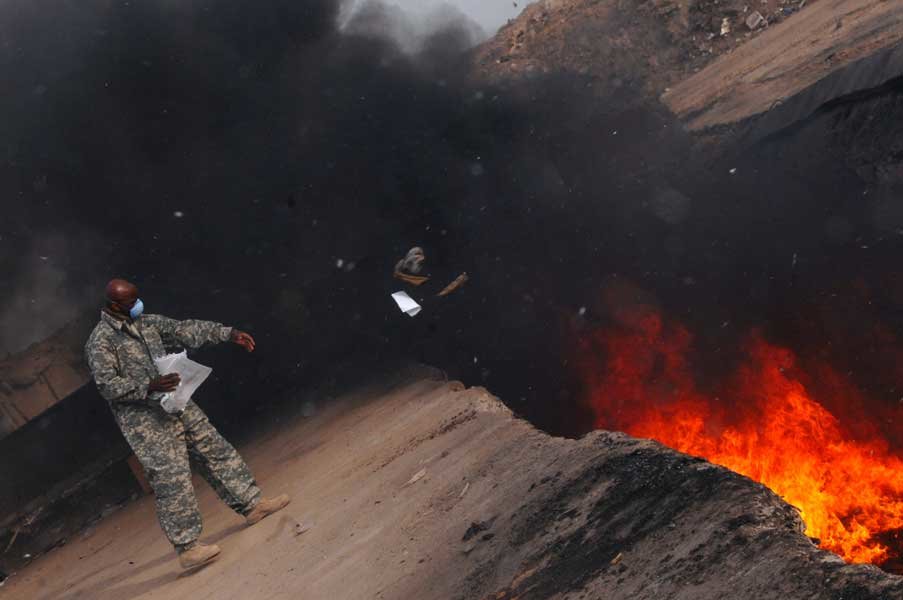
Master Sgt. Darryl Sterling, 332nd Expeditionary Logistics Readiness Squadron equipment manager, throws trash into a burn pit at Joint Base Balad, Iraq, in 2008. U.S. Air Force photo by Senior Airman Julianne Showalter
By KELLY KENNEDY
Just 10,588 burn-pit claims have been filed since Sept. 11, 2001, Veterans Affairs said in response to a Freedom of Information Act request from a veterans advocacy group.
But that’s only a fraction of what veterans advocates say they expected to see. Veterans have filed 98,017 claims for “environmental claims” since 9/11, and at least 200,000 people have signed up for VA’s burn-pit registry, according to VA. That means burn-pit claims make up slightly less than 10% of VA’s total number of environmental exposure claims for veterans returning from Iraq and Afghanistan.
That makes it difficult for experts and researchers to track veterans to look for trends, for legislators to watch so they can properly fund VA and provide legislation for benefits, and for veterans service organizations to learn from as they determine how best to help veterans file claims.
Kerry Baker, who helps veterans appeal VA disability claims and who previously worked for VA’s Veterans Benefits Administration, said he has been personally involved to some extent with more than 1,000 burn-pit claims. “There’s no way I’ve been involved with 10% of the nation’s burn pit claims,” he said. “So I want to know how they are getting these numbers.”

In May, VA officials warned that veterans and service members sick with COVID-19 who have been exposed to burn pits may be at heightened risk for complications from the disease.
The military burned as much as 250 tons of trash a day at Joint Base Balad alone, as well as tons more in open pits in Iraq and Afghanistan—as close as one mile away from service members’ living quarters. (Juneau, Alaska, produces about 83 tons of trash a day.) In 2006, an Air Force bioenvironmental engineer called the pit at Joint Base Balad an “acute health hazard” and worried people on base would face chronic health problems.
Most large bases in Iraq and Afghanistan had burn pits, and the military burned everything from Styrofoam from the dining facilities to petroleum products to paints and solvents, releasing contaminants, including benzene, an aircraft fuel known to cause leukemia; arsenic; Freon; ethylbenzene; formaldehyde; hydrogen cyanide; nitrogen dioxide; sulfuric acid; and xylene.
The biggest issue? Dioxin, which is the same chemical that was used to make Agent Orange during the Vietnam War. It has been linked to cancers, diabetes, and birth defects. It also can interfere with the immune system. The Environmental Protection Agency explains that dioxin is a byproduct of burning materials—including wood, which is why burning trash in the backyard is banned in most cities.
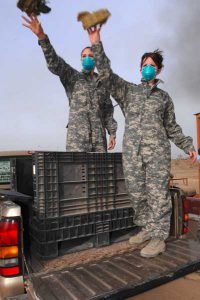
“What surprised me were the unbelievably low numbers they’re reporting,” said Baker, who has been tracking veterans with health issues they believe are associated with burn pits since 2008. “It’s so inaccurate.”
And Rosie Torres, who, along with her husband, retired Army Capt. Le Roy Torres, filed the FOIA request on behalf of Burn Pits 360, said veterans shouldn’t have had to ask for the numbers.
“It should be coming from them,” she said. “They should be willingly delivering this information to the public, but we have to force them to do this.”
VA responded to questions from The War Horse by processing them as a FOIA request.
But in their written response to Burn Pits 360, VA officials said they included only cases that specifically state “burn pit” or “BPE” “within the text of the decision”—which doesn’t include if the veteran used the term when filing an initial claim—for the FOIA request. And, they said, the 98,017 figure could include veterans exposed to other environmental hazards in Iraq or Afghanistan.
“They just did a word search in their corporate database for ‘burn pits’ or ‘bp’—that I’ve rarely seen people use in a burn pit claim,” Baker said. “The vast majority of these cases don’t mention burn pits, even when a veteran says ‘burn pit’ when he raises his claim. So a veteran might say, ‘burn pits,’ but the adjudicators might say ‘environmental hazards in Iraq and Afghanistan.’”
If VA searched the corporate database, they looked at rating decisions, not the veteran’s initial claim or record, Baker said—but the rating decision probably won’t say “burn pit.”
And veterans themselves may not have used the term “burn pit.”
“The training letter even told adjudicators, ‘Don’t refuse development under this policy if they don’t use “burn pits’’ as a basis for their claims because [veterans] might not know about it or might not associate their disability with burn pits,’” Baker said. “There’s no way you’re going to catch even a majority if all you’re doing is a corporate word search. There’s just no way.”
Baker said “Gulf War Environmental Special Issue,” the term used in VA’s burn pit training letter, would have turned up many more cases than “burn pit.”
“Ten thousand cases is just not remotely close to accurate,” Baker said.
But the VA figures also show an astonishingly low rate of approval of burn pit claims: Of the 10,588 claims, only 2,360 veterans had their benefits granted, and 8,228 veterans had their claims denied.
The numbers are low for approved claims for all environmental-exposure claims, as well. VA’s numbers show that veterans who served in Southwest Asia claimed 248,610 respiratory conditions since Sept. 11, 2001. Of those, VA said 61,734 conditions were granted benefits and 93,957 were not.
Baker also found it curious that the burn pit cases go back as far as 2007, because prior to a 2010 training letter that laid out how to adjudicate a burn pit claim, there had been no VA policy on burn pit claims, he said.
“So my first questions was, ‘How did you get a number from 2007?’” Baker said. “The numbers they are using aren’t using the tracking mechanism from the training letter.”
And he still sees problems with adjudication: If a person gets sick while still in the military, their illness is typically awarded service-connection. But if a person gets out of the military, even with documented exposure to burn pits, and later develops bronchiolitis, their case is not being approved.
“Those ones, I don’t see any improvement whatsoever,” he said.
In its FOIA request, Burn Pits 360 also asked about a specific disorder: constrictive bronchiolitis.
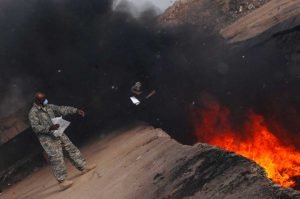
In 2008, Robert Miller, a pulmonologist at Vanderbilt University Medical Center, began performing biopsies on the lungs of Fort Campbell soldiers no longer able to run fast enough to pass their physical fitness tests after deploying to Iraq. The soldiers also quickly became tired with normal activity and generally had difficulty breathing. Many of those 101st Airborne soldiers had been exposed to a sulfur-emitting factory—but many had not. After the biopsies, Miller found that more than 100 soldiers had constrictive bronchiolitis, a rare condition typically seen in lung-transplant patients or as a result of toxic fumes. It affects the smallest airways of the lungs and isn’t detectable through typical respiratory tests.
“Ten thousand five hundred burn-pit claims and 200 cancers?” Torres said. “I don’t think they’re capturing things correctly.”
But VA doesn’t have rating criteria for constrictive bronchiolitis. In the past, it has simply used “constrictive bronchitis,” and then rated veterans based on whether they had normal pulmonary function tests, Baker said. And they do—because constrictive bronchiolitis doesn’t normally show up on pulmonary function tests. The FOIA request asked if progress had been made on creating rating criteria for constrictive bronchiolitis.
“That’s why Rosie [Torres] wants presumption for at least bronchiolitis,” Baker said.
“We are working with Senator [Kirsten] Gillibrand on a toxic exposure burn pit presumptive coverage bill that will be ready in September,” Torres said. Gillibrand’s office did not respond to a request for comment.
On Aug. 28, Burn Pits 360, along with Grunt Style, will host a conference in preparation of the bill featuring Miller, Jon Stewart, former VA Secretary David Shulkin, and Baker, among others, Torres said.
“Veterans and service members are sick and dying,” Torres said. “According to the Burn Pits 360 registry, we know there are veterans struggling with illnesses that live in every state and congressional district nationwide. This conference is a form of hope for so many left fighting a system of delay and deny.”
In response to the FOIA request, VA said the Veterans Benefits Administration is revising its respiratory condition regulation.
“Since VBA is still engaged in the deliberative process, VBA is unable to share details concerning possible revisions,” the FOIA response states, and did not confirm whether constrictive bronchiolitis will be included in the proposed changes.
Torres said she’s thinking in terms of what will help veterans now. For now, there are no clinical guidelines for veterans exposed to burn pit smoke, and there are problems within the benefits adjudication system for veterans who say they’re sick because of the burn pits. Many conditions connected to environmental hazard exposure don’t appear until years after a person has been exposed—as has been demonstrated with first responders to the World Trade Center who encountered smoke similar to what service members breathed in Iraq and Afghanistan—and veterans who claim exposure have a hard time claiming benefits.
“I don’t think more studies are the answer,” Torres said. “The reality is people are dying.”
Torres had physicians investigate science-based, peer-reviewed material and identify which exposures could cause health problems for veterans, and then gave the information to Congress members and Veterans Affairs.
Torres and Baker also asked VA for information about people filing for benefits after a death, but didn’t receive it.
“They may still be working through some of the data,” Torres said.
The pair also asked for cancer numbers since 9/11. Instead, they received cancer numbers from within the 10,000 burn pit claims, Baker said.
“Ten thousand five hundred burn-pit claims and 200 cancers?” Torres said. “I don’t think they’re capturing things correctly.”
As Baker and Torres have pushed the issue since 2008, a coalition of veterans service organizations has also formed to insist that the issue be addressed.
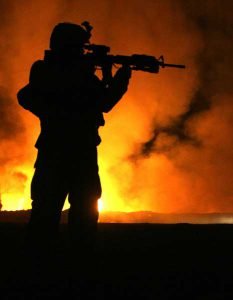
Research shows respiratory symptoms and asthma rates are higher in service members and veterans who deployed to Iraq and Afghanistan versus those who did not. And veterans who have joined Veterans Affairs’ burn pit registry also report high instances of hypertension and lung disease. More than 1.9 million people have deployed to Iraq and Afghanistan since the wars began.
But since the burn-pit story first broke in 2008, there has been little progress in ensuring veterans receive disability benefits associated with the burn pits, including for respiratory disorders. To that end, Burn Pits 360 has brought on Jon Stewart and Ted Koppel to promote the cause, and Rosie Torres is working with Congress members on legislation that would cause veterans’ claims to be approved automatically for respiratory illnesses if they can show they were exposed to a burn pit.
The House passed legislation in July that includes $840 million for medical research that must include toxic exposures, including for burn pits. It also would expand the burn pit registry and improve training for medical personnel about the effects of burn pits. The Senate will now decide if it will pass similar legislation.
VA does not acknowledge a connection between poor long-term respiratory health and the burn pits.
“At this time, research does not show evidence of long-term health problems from exposure to burn pits. VA continues to study the health of deployed Veterans,” VA’s website states.
But a new study published in Military Medicine conducted by the VA’s Airborne Hazards and Burn Pits Center of Excellence at the War Related Illness and Injury Study Center found that respiratory issues in service members who deployed to Iraq and Afghanistan may be, in part, connected to physical training in polluted areas. Service members at Balad and other bases ran outside and worked out in gyms near the burn pits. Researchers found that while veterans’ pulmonary function tests came up normal, many of those same veterans say they wheeze or feel short of breath after they exercise. The researchers wrote this is known to happen in people with asthma—as well as with athletes. It tends to be worse in athletes exposed to particulate matter or “gaseous irritants,” they wrote.
“Although the exact mechanism for increased prevalence of [exercise-induced bronchoconstriction] in athletic populations remains to be fully established, repeated bouts of exercise hyperpnoea in polluted environments has been identified as an important risk factor,” they wrote.
The researchers asked 24 veterans—19 of whom were deployed on a base with a burn pit—who had never been diagnosed with an illness or sought care for burn pit exposure to take a spirometry test to check their lung function, and then to exercise on a treadmill. After exercising, the veterans took another spirometry test. Spirometry tests check how much people inhale, as well as how much and how quickly they exhale.
They found that the veterans the researchers found had exercise-induced bronchoconstriction were less likely to have smoked and had shorter cumulative deployment lengths, but respiratory symptoms were similar among all of the veterans: One in two reported coughing, and one in three reported wheezing, shortness of breath and sputum production. However, the researchers found that the deployed veterans not diagnosed with asthma did not have a higher rate of EIB than would be expected in a civilian population of people who have not been diagnosed with asthma. (Recruits are screened for respiratory issues before joining the military.)
But, using “less conservative criteria,” the researchers found that 42% of the veterans “demonstrated evidence of acute airway narrowing” after exercising.
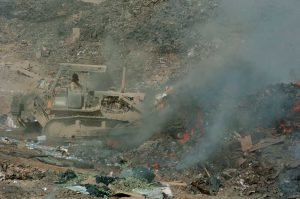
“This finding is particularly concerning in that our sample was non-treatment seeking yet reported frequent lower respiratory symptoms,” they wrote. Only 38% of the veterans met recommended levels of exercise, and prior research found that people with exercise-induced respiratory issues stop or avoid exercise, they wrote, and expressed the need for more research.
In May, the Defense Department released a “clinical tool box” for providers. The military advises service members to sign up for VA’s burn pit registry. Then, the service member may request a physical exam through the registry site.
However, it is notoriously difficult to enroll in the registry. (After multiple attempts, this reporter, an Army veteran, tried again in July, logged in, learned she needed to update a phone number to enter the system, and then learned she needed to wait 23 minutes to speak to an agent on the phone to update her phone number.)
Of those who have registered, 72% report neurological problems, 40% report allergies, 37% report hypertension, 19% report immune-system issues, 14% report asthma and 13% report chronic bronchitis, VA documents show.
Last October, Eric Shuping, VA’s director of Post-911 Era Environmental Health Program, spoke to veterans service organizations about environmental hazards in Iraq and Afghanistan to explain how VA had addressed problems identified in a 2017 Institute of Medicine report about the burn pits.
Only 10% of people who request a physical examination after completing the registry complete one. By August 2019, only 2,942 had completed an exam. Shuping’s slide deck shows VA is trying to get the word out about exams to VA employees, as well as train them about how to conduct them.
The registry takes about 40 minutes to complete, according to Shuping’s PowerPoint slide deck. From June 2014 to March 2019, 90,125 did not complete the registry, while 170,693 did.
VA should eliminate the section requiring veterans to report previous addresses, their nonmilitary work history, their home environment, community and hobbies, and instead focus on information “that may only be useful in epidemiologic studies of the population,” the Institute of Medicine said, Shuping’s slides showed.
But VA found that 38% of veterans never started the questionnaire, and 37% didn’t make it through the deployment section.
A contract has been put out to bid and will be completed in 2021 to bring in external experts to revamp the registry questionnaire, Shuping’s slides state.
But Torres said veterans and their families shouldn’t have to wait for the government to prove what she says has already been proven.
“It’s already there,” she said. “That’s what bothers me so much. I don’t understand why we still need to prove it.”
Editors Note: This article first appeared on The War Horse, an award-winning nonprofit news organization educating the public on military service.

The War Horse is an award-winning nonprofit newsroom and the most trusted source for bulletproof reporting on the human impact of military service. Our team holds power to account, strengthens our democracy, and improves understanding of the true cost of military service.
BRCC and Bad Moon Print Press team up for an exclusive, limited-edition T-shirt design!
BRCC partners with Team Room Design for an exclusive T-shirt release!
Thirty Seconds Out has partnered with BRCC for an exclusive shirt design invoking the God of Winter.
Lucas O'Hara of Grizzly Forge has teamed up with BRCC for a badass, exclusive Shirt Club T-shirt design featuring his most popular knife and tiomahawk.
Coffee or Die sits down with one of the graphic designers behind Black Rifle Coffee's signature look and vibe.
Biden will award the Medal of Honor to a Vietnam War Army helicopter pilot who risked his life to save a reconnaissance team from almost certain death.
Ever wonder how much Jack Mandaville would f*ck sh*t up if he went back in time? The American Revolution didn't even see him coming.
A nearly 200-year-old West Point time capsule that at first appeared to yield little more than dust contains hidden treasure, the US Military Academy said.












